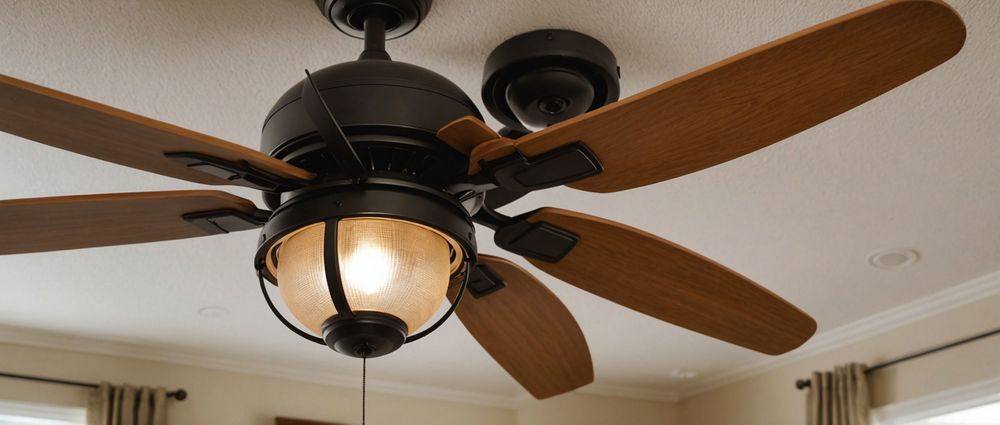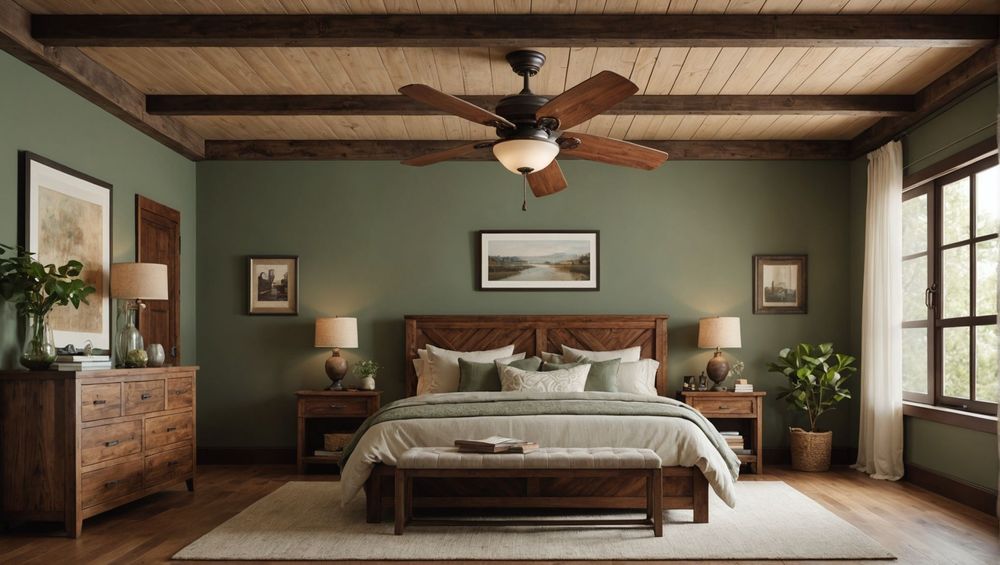Choosing the right ceiling fan for your bedroom can significantly enhance your comfort, improve airflow, and elevate the overall decor. With various types, styles, and functionalities available on the market, it’s essential to understand a few key factors before making a purchase. In this guide, we will explore the important elements to consider when selecting a ceiling fan, from size and style to energy efficiency and noise levels. By the end, you’ll have a clear idea of how to find the perfect ceiling fan that meets your needs and complements your bedroom’s aesthetic.
1. Consider the Size of the Fan

One of the first things to determine when choosing a ceiling fan is the appropriate size for your bedroom. The size impacts both functionality and style, making it crucial to measure your space accurately. A fan that is too small may struggle to distribute airflow evenly, while one that is too large can overpower the room’s proportions. To find the best fit, you can follow this simple guideline based on room dimensions:
- Room Size: 75 sq. ft. or less — Fan diameter: 36 inches
- Room Size: 76-144 sq. ft. — Fan diameter: 42 inches
- Room Size: 144-225 sq. ft. — Fan diameter: 52 inches
- Room Size: 225 sq. ft. and larger — Fan diameter: 56 inches or more
In addition to diameter, the height of the ceiling should also influence your choice. If your ceiling is high, consider using a downrod to lower the fan for better airflow. Higher ceilings require longer downrods to ensure optimal performance and safety.
2. Choose the Right Style

Ceiling fans come in a myriad of styles and finishes, allowing you to select one that beautifully complements your bedroom decor. From modern minimalist to rustic farmhouse, there are options to suit any aesthetic. Here are a few styles to consider:
- Traditional: Often incorporates wooden blades and classic designs.
- Contemporary: Features sleek lines, shiny finishes, and innovative designs.
- Industrial: Uses metal materials and functionalities that emphasize a raw, unfinished look.
- Vintage: Often has retro lighting and wood tones that evoke a nostalgic feel.
As you consider style, also pay attention to colors and finishes. Whether you prefer a polished chrome, matte black, or a natural wood finish, choose something that harmonizes with the color palette and furnishings in your bedroom.
3. Energy Efficiency and Motor Quality
In today’s energy-conscious world, selecting an energy-efficient ceiling fan can lead to long-term savings on your electricity bill. Look for fans labeled with ENERGY STAR certification, which indicates that they meet high efficiency standards. Additionally, the quality of the motor plays a crucial role in how well the fan performs and how long it lasts. Some key points to consider include:
- DC Motors: More energy-efficient than traditional AC motors and generally quieter.
- Blade Pitch: A higher pitch (angle of the blades) helps to move more air, enhancing airflow efficiency.
- Speed Settings: Multiple speed settings provide flexibility for different weather conditions.
Investing in a high-quality fan with a good motor can not only boost the cooling effect but also reduce wear and tear, increasing its lifespan and performance over time.
4. Noise Levels Matter
For a bedroom ambiance, noise levels can greatly affect your comfort and sleep quality. When selecting a ceiling fan, consider how much noise it generates during operation. Ideally, you want a fan that operates quietly, especially if you intend to use it while sleeping. You can assess noise levels by:
- Reviewing customer feedback on noise levels.
- Checking for fans with features like a silent motor or noise-dampening technology.
- Choosing models with enclosed blades, as these tend to produce less noise.
By prioritizing quiet operation, you can enjoy peaceful evenings and restful sleep without the hum of a noisy fan disturbing the tranquility of your bedroom.
5. Installation and Maintenance
Finally, consider how easy it is to install and maintain your ceiling fan. While many fans come with installation kits and instructions, some models may require professional installation. Assess whether you’re comfortable with DIY projects or if hiring a professional would be a better option for you. Additionally, it’s crucial to consider maintenance, such as cleaning the blades to prevent dust accumulation.
Simple maintenance tasks include:
- Regularly dusting the blades to keep them clean and efficient.
- Inspecting the wiring and securing the fan to ensure safety.
- Lubricating the motor if necessary, based on the manufacturer’s recommendations.
By staying proactive with installation and maintenance, you can maximize the lifespan and performance of your chosen ceiling fan.
Conclusion
Choosing the right ceiling fan for your bedroom does not have to be a daunting task. By considering the size, style, energy efficiency, noise levels, and installation requirements, you can confidently find a ceiling fan that enhances your comfort while fitting seamlessly into your decor. Take the time to explore your options, and don’t hesitate to seek advice if needed, as the right fan can transform your bedroom into a serene oasis where you can relax and rejuvenate.
FAQs
1. What is the ideal height for mounting a ceiling fan?
The ideal height for mounting a ceiling fan is approximately 8 to 9 feet from the floor. This ensures optimal airflow and safety, while allowing the fan to function effectively without risking contact with your head.
2. How do I know if the ceiling fan is energy efficient?
Look for ceiling fans that are ENERGY STAR certified. This indicates they meet specific energy efficiency guidelines, helping you save on energy costs and reducing your environmental footprint.
3. Can I install a ceiling fan on a sloped ceiling?
Yes, many ceiling fans are designed to be installed on sloped ceilings. However, ensure you choose a fan with a compatible mounting system or purchase an adapter to accommodate the slope correctly.
4. How often should I clean my ceiling fan?
It’s a good practice to clean your ceiling fan every month, especially during peak usage seasons. Regular cleaning helps maintain efficiency and prolongs the lifespan of the fan.
5. What size ceiling fan do I need for a large bedroom?
For a large bedroom, typically over 225 square feet, you would need a ceiling fan with a diameter of 56 inches or more. Additionally, consider the height and design of the room to ensure proper airflow.









